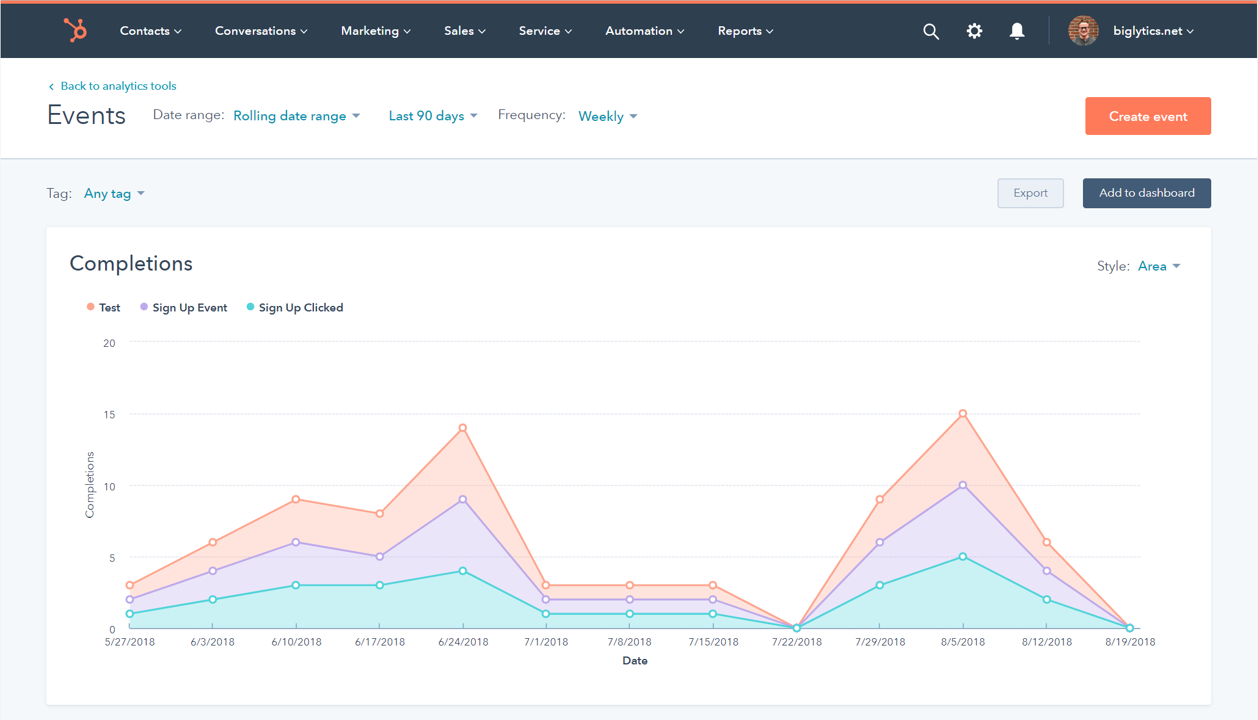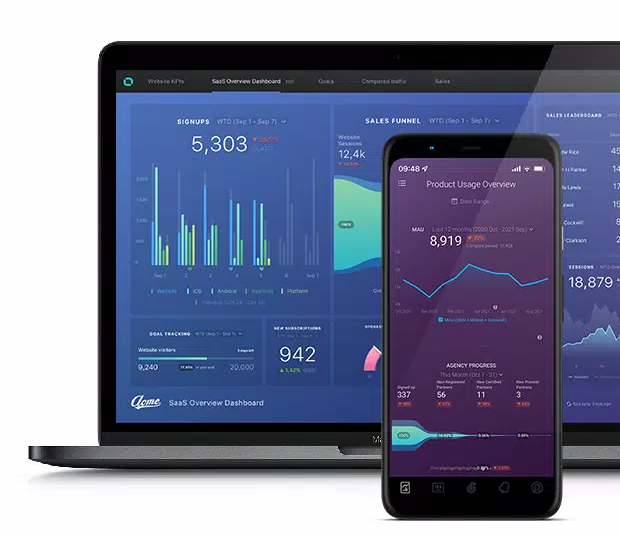In the previous blog post, we talked about Inbound. This blog post will share some Key Takeaways that you can use to Inbound your business giving you a sense of how to implement Inbound into your business.
Make sure to read through the whole blog to grasp all the topics and use them for your Business.
So what is Inbound Marketing?
Inbound Marketing is similar to Inbound, which we discussed in the previous blog.
Inbound marketing is a strategy that attracts and retains customers by creating
valuable content and more personalized experiences. Inbound marketing forms connections customers are looking for and solves problems they already have.
To make your Inbound Marketing successful, you need to have a strong grasp of Inbound Methodology.
Let’s go over what Inbound Methodology is?
Inbound Methodology is a method to grow your business by building strong and lasting relationships with your buyers/customers and helping them reach their goals.
This is carried out in 3 stages:
- Attract
- Engage
- Delight
Let’s examine and review them for how you’re going to use them in your business.
In the first stage which is the Attract stage, you attract visitors by using useful content while eliminating any barriers which get in between you and your customers.
Remember you want their attention, but don’t force them.
In Marketing, the strategies you should use are blogging, social publishing, SEO (Search Engine Optimization), display advertising, and paid search ads. By using all of these together will help you reach your targeted buyers/customers on the channels they’re using to look for solutions to their problems, different ways to achieve their goals, or browse new products and services.
In the Engage stage, you make it easy for customers to shop and buy from you by
enabling buyers to interact with you on their preferred timelines and channels. Then, you concentrate on opening connections, not just closing deals.
In Marketing, this means using email personalization and website, database segmentation, marketing automation, lead nurturing, and multichannel communications such as chat and messaging.
Lastly, we have the Delight stage, you help, support, and endue customers to reach their goals. Here, you focus on creating a buzz around your brand.
In Marketing, this means using social mentions, reviews, suggestions, a customer loyalty program, and/or user-generated content.
To begin, you must conduct research and fully comprehend who you are attempting to target.
After all, you don't want all visitors to your website. You're looking for the appropriate kind of traffic. The right traffic, on the other hand, is comprised of people who are most likely to convert into leads and ultimately, satisfied customers. These visitors are the best fit for your buyer personas.
Buyer personas assist you in identifying groups of customers who have similar demographics, psychographics, and behaviors. They disclose what these visitors want to see when to show it, and how to better serve them throughout their relationship with your company.
This information about your leads and their choices will also help determine how you'll personalize your content to meet their demands, which brings us to the buyer's journey.

Your visitors will overcome hurdles and achieve their objectives in different ways throughout the buyer's journey. As customers move closer to completing a purchase, you'll need to understand what they're thinking and, maybe more significantly, how they're feeling.
That way you can match them step-for-step; from the Awareness that a problem exists, to Consideration of the potential solutions, until they reach a Decision.
Customers nowadays expect one-of-a-kind experiences. This includes personalized suggestions, dynamic content, and limited-time offers. These are typically set up based on a visitor's behavior on your site, as well as their demographics and interests.
Based on behavioral and demographic data, audience segmentation assists you in grouping your most crucial buyers.
You may use that information to figure out which of those groups are the most valuable and receptive to various types of messaging, and hence which audiences you should focus on developing content for.
Similarly, effective marketing automation takes into account your leads' changing needs, as well as their behaviors and interactions with you across all of your marketing channels — not just email. Using behavioral inputs from multiple channels, such as likes on social media posts, views on your pricing page, or engagements with specific pieces of content, provides the context you need to fully understand a lead's challenges.
You might be wondering, how to figure out what’s working and what’s not working for your marketing team?
Well, that takes a special type of reporting and that is Marketing Attributions Reports.
Marketing Attribution Reports aggregate all relevant interactions from your Buyers' Journey using pre-built models to determine which channels and content are assisting you in meeting your marketing objectives. They assist you and your team in receiving the credit you deserve. This is significant because it has historically been difficult for marketing teams to demonstrate their contribution to their company's bottom line. With attribution reports, you can demonstrate how much influence your content had, which can help you advocate for more headcount and budget.
By incorporating these components into your inbound marketing strategy, you can make data-driven decisions, grow sustainably, and ensure your customer is at the center of everything you do.
Let’s talk about how you can implement Inbound Marketing in your business.
Let us begin with blogging. Blogs help drive traffic to your website, convert that traffic into leads, establish authority in an industry, help your business grow, and attract new customers months and even years after publication.

Blogging promotes education and discussion about a topic, all while linking this content to needs. They discuss any issues in a way that makes readers feel good, which leads to them feeling good about the brand overall. Making them approach your business.
Social media marketing is another excellent way to build a strong brand image through enjoyable social media engagement.
Because you're advertising to people who have chosen to engage with you by following your account, promoting and sharing your products on social media is a simple way to improve lead generation, conversions, and sales.

You can build long-lasting relationships with your social media followers by connecting and engaging with them. You can accomplish this by interacting with them on your posts, responding to their questions and comments, and offering any assistance they may require.
You can also ask your followers questions about your products, and their problems, or create giveaways to help you build trust and demonstrate how much you appreciate their feedback and support.
Email is another popular type of inbound content.
Before you declare that email is extinct, consider this: According to an OptinMonster study, 99% of email users check their inboxes daily, with some checking up to 20 times per day. 58% of those surveyed check their email first thing in the morning.
Email marketing as a tool is not extinct. However, some email marketing practices are, such as impersonal email address lines, GDPR violations, and disregard for the user experience.

So when do you use Email Marketing?
There are numerous applications for email marketing, some of which are as follows:
- Build relationships: Build connections by providing personalized engagements.
- Boost brand awareness: Keep your company and its services at the forefront of your prospects' minds until they are ready to engage.
- Promote your content: Share relevant blog content or useful assets with your prospects via email to promote your content.
- Generate leads: Create leads by enticing subscribers to provide their personal information in exchange for a valuable asset.
- Market your products: Promote your company's products and services.
- Nurture leads: Provide your customers with content that will help them achieve their goals.
You want to use a voice and tone that your audience will recognize, as well as content that is relevant to them. To do this at scale, you must think beyond demographic segmentation and consider past customer behavior.
Finally, let’s take into account how targeted audiences and personalized outreach can boost results.
It makes certain strategies available to you even if you lack a large marketing team and a large budget. Testing and tracking how your 12 pieces of content perform can also help you learn more about your audience.
This allows you to create the type of experience they want to participate in.
This is by no means an exhaustive list of how to create various types of inbound content.

You should also consider making ads that help rather than interrupt, or videos that educate and are easily shareable. The most important takeaway is that what inbound looks like will depend on your audience, the type of content and experience that works best for them, and how you intend to scale it to meet your short and long-term marketing goals.
Now that you've seen how inbound marketing works in practice, it's time to think about the tools, information, and resources you'll need to build a solid inbound marketing foundation for your company.
You should build your marketing toolkit around your customer data, just as you should build your inbound marketing strategies around your buyer personas. A CRM (Customer Relationship Management Tool) can benefit any company that wants to maintain a relationship with its customers. CRM software, as the name implies, is a system for managing customer relationships.

A CRM allows you to organize all of your leads and customers' information in one place. It makes it simple for everyone on your team to understand the state of your company and the status of each customer relationship.
However, a CRM by itself is unlikely to be sufficient for creating great content and consistently reaching out to your buyers.
A marketing technology (Martech) stack is a collection of tools that marketers use to carry out various aspects of their marketing campaigns, such as lead generation, email marketing, and social media management. These tools save time by streamlining and automating your processes. They also assist marketers in analyzing the success of their efforts over time.
Typically, one Martech tool is used for each marketing discipline, but certain platforms may assist you in accomplishing multiple tasks.
Let's take a look at some of the most popular pieces of software that help marketers execute effectively in today's market.
Search Engine Optimization (SEO) is supported by SEMrush, Moz, Ahrefs, and the Google Search Console. These various software solutions assist you in measuring, monitoring, and evaluating your online visibility, and include tools to assist you in link building, keyword research and competitive analysis, auditing your site, and more.
The goal of content marketing is to create and distribute valuable content to attract and retain a specific audience. That means you'll need WordPress to build and maintain a website, Buzzsomo to measure the success of your content, HotJar to track and monitor online behavior, and Canva to create stunning graphics.

For all of your social media marketing needs, Hootsuite, Buffer, and Sprout Social are excellent starting points. Each of these tools assists you in creating and curating awesome content, scheduling posts, managing your social media tasks, and measuring your ROI.
Finally, for managing your advertising strategy, consider AdRoll, Rollworks, 6Sense, and Adstream. These tools can assist you in creating, optimizing, and delivering advertising content. Some, such as AdRoll, make it simple to create remarketing campaigns.
To keep their data connected, some marketers use an all-in-one solution like HubSpot rather than a plethora of individual tools.
Make sure you have at least one good automation feature in your toolbox, regardless of which platforms you choose. This will allow you to save time on daily tasks such as saving emails and files to spreadsheets. It's ideal to have a tool that simplifies your life and helps you save time.
Now let’s talk about Marketing Automation Tools.
Most marketing automation tools also include reports that enable you to see and present the performance of your campaigns to other employees in your organization.
What if you want to take a more comprehensive look at the state of your marketing?
Here are some of the most popular reporting tools among users.

Google Analytics, or GA, is an analytics tool that provides a detailed analysis of the performance of your website and/or app.
It integrates with Google's marketing and advertising platforms and products (including Google Ads, Search Console, and Data Studio), making it a popular choice for anyone who uses multiple Google tools.

HubSpot is up next. By seamlessly connecting your marketing, sales, and service data, HubSpot makes it simple to create custom reports that answer even the most complex questions.
To make the custom report builder even more powerful, you can easily import data into HubSpot using custom objects and integrate your favorite apps through the HubSpot Marketplace.

Consider Databox as well. In just a few clicks, Databox lets you view analytics data from a variety of data sources on your mobile, desktop, and television, including HubSpot Marketing, Google Analytics, SEMRush, and Wistia.
To keep day-to-day tasks manageable and streamlined, it's critical to align communication across the company. Consider Slack, a powerful messaging app that allows teammates to quickly exchange messages without the hassle of email.

Slack has powerful features and integrations that allow you to integrate all of your other daily tools, such as Trello, Gmail, Giphy, and a slew of others, right where you're already communicating. You can create channels to communicate with different teams or just chat with specific colleagues. Slack makes remote and in-person collaboration easier than ever before.
This is by no means an exhaustive list of all the tools available to you or that you may wish to use.
However, when combined with a CRM and a comprehensive Martech stack that includes automation, reporting, collaboration, and project management features, you will have the inbound marketing toolkit you need to Attract, Engage, and Delight your customers at scale.
Conclusion:
Now I hope you have fully understood Inbound and how to apply it in your business. Using Inbound in your business will make your business a human and emphatic one. It will also help you build a strong relationship with your customers/buyers also while growing your business.






.png)














 ebarak@inbouncy.com
ebarak@inbouncy.com Schedule a Meeting
Schedule a Meeting Ebarak Hossain
Ebarak Hossain
Submit Your Two Cents